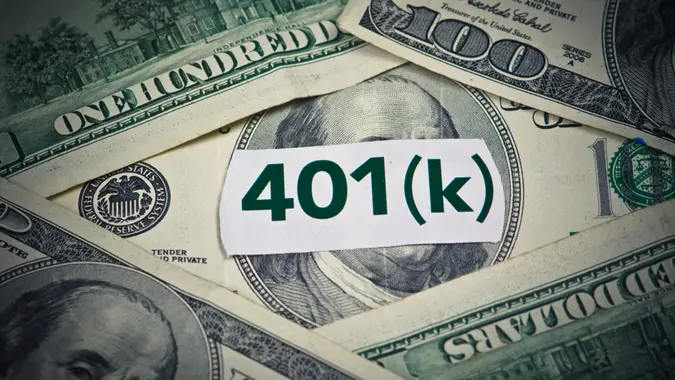Money Influencer Vivian Tu: 4 Things To Do Now If You’re Panicking About Retirement

Commitment to Our Readers
GOBankingRates' editorial team is committed to bringing you unbiased reviews and information. We use data-driven methodologies to evaluate financial products and services - our reviews and ratings are not influenced by advertisers. You can read more about our editorial guidelines and our products and services review methodology.

20 Years
Helping You Live Richer

Reviewed
by Experts

Trusted by
Millions of Readers
Saving for retirement is something you should start doing as soon as you enter the working world, but sometimes the best laid plans go awry. It’s not uncommon for people to be way behind on their retirement savings as they reach their 50s and 60s. In fact, it’s more the rule than the exception.
If you’re inching closer to retirement age and feeling panicky about whether you’re financially ready, there are steps you can take to bolster your nest egg. Money influencer Vivian Tu, a former Wall Street trader and current CEO of Your Rich BFF Media, recently shared a TikTok video offering advice.
Here are four things Tu suggests doing if you’re panicking about retirement.
1. Figure Out How Much Money You Will Need
Tu recommends using a retirement calculator to figure out how much money you’ll need in retirement versus how much time you have to get there and how long you’ll realistically live after retiring.
The rule of thumb is that to you’ll need about 80% of your pre-retirement income to maintain your lifestyle in retirement — although that rule requires a “pretty flexible thumb,” according to the AARP. The reason it’s 80% instead of 100% is that in retirement you’ll get rid of work-related costs (commuting, new clothes, lunches out) and you’ll no longer have to contribute money to retirement accounts or payroll taxes.
Of course, the amount you will need in retirement ultimately depends on factors such as your location, healthcare needs and preferred lifestyle. In terms of your income in retirement: In addition to budgeting withdrawals from retirement savings, you can determine your Social Security retirement benefits by using the Social Security Retirement Estimator.
2. Tackle Your Debt
Lingering debt payments can be a “drag” on your retirement and you “might need to make some sacrifices” to pay it down, Tu said. The one thing she strongly recommends is getting your debt-to-income ratio under 40% — and the lower, the better.
To determine your ratio, Fulton Bank suggests adding up your monthly debt payments, including mortgage, car payment, credit card payments and other loans. Next, divide those payments by the monthly gross income (before taxes) that you expect to have in retirement.
3. Do Not Sacrifice Your Retirement to Help Your Kids
A lot of folks in their 50s and 60s “sacrifice their own retirements to help their kids pay for school or buy a home,” Tu said. Her suggestion: Don’t do it.
“They can take a loan ou,t but you can’t borrow money for retirement,” Tu said. “Your kids have time on their side, but you don’t have that luxury. You may think you’re helping them, but if you can’t fund your own retirement they’ll end up paying for it.”
Despite that advice, a study released by USA Today last year found that nearly two-thirds (65%) of parents give their adult children some kind of financial support. According to the study, these parents spend an average of $718 a month helping their children 22 and older — money that could come in very handy in retirement.
4. Take Advantage of Catch-Up Contributions
As Tu noted, younger workers can only contribute so much to their tax-sheltered retirement plans, but at age 50 you can start making extra “catch up” contributions. If you’re not currently maxing out your retirement savings, now’s a good time to start.
In 2025, the contribution limit for employees who participate in traditional 401(k) plans is $23,500 a year if you’re younger than 50, according to the IRS. If you’re 50 or older, the catch-up contribution is $7,500. If you have an IRA, the 2025 limit remains at $7,000 for those under age 50 and $8,000 for those age 50 or older.
More From GOBankingRates
- Nearly 1 in 3 Americans Hit by a Costly Holiday Scam, Norton Survey Shows -- How To Avoid This
- Here's What the Average Social Security Payment Will Be in Winter 2025
- How Middle-Class Earners Are Quietly Becoming Millionaires -- and How You Can, Too
- The Easiest Way to Score $250 for Things You Already Do
 Written by
Written by  Edited by
Edited by 

























